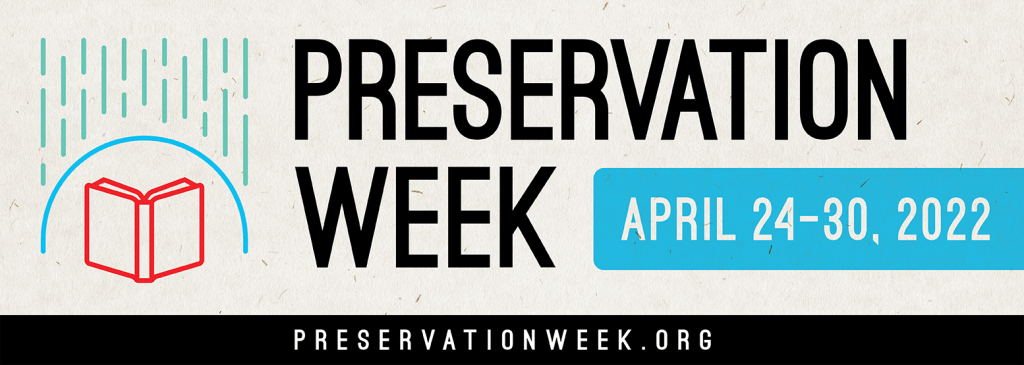
Preservation Week inspires action to preserve personal, family, and community collections in addition to library, museum, and archive collections. It also raises awareness of the role libraries and other cultural institutions play in providing ongoing preservation education and information.
The 2022 Preservation Week theme is “Preservation in the Face of Climate Change” and UPROSE Executive Director Elizabeth Yeampierre is this year’s honorary chair. Celebrating the concept of climate resiliency, Preservation Week 2022 will highlight the effects of climate change on our shared cultural heritage materials. The papers, photographs, ephemera and other materials held by both institutions and individuals can be integral to telling the story of the human impact on the environment. During Preservation Week, libraries, museums, institutions and communities are urged to examine the effects on collections and their keepers, as well as resiliency strategies.
A variety of online presentations are available for free.
ALA webinars
How to Implement Sustainability in Your Facility
– Tuesday, April 26, 1:00-2:00pm CT
Digital Preservation’s Impact on the Environment
– Thursday, April 28, 1:00-2:00pm CT
@SAAPreservation Twitter conference hosted by the Society of American Archivists Preservation Section
– Wednesday, April 27, noon EDT
– Follow along on Twitter using the hashtag #PresTC22
Conservation Center for Art & Historic Artifacts
You Don’t Have to Be Special to Use Special Collections
– April 26, 2022 – 2:00pm ET
Library of Congress webinars
Fragments, Discovery and Creating Knowledge
Monday, April 25th, 11 am (EDT)
Fenella France, Chief of the Preservation Research and Testing Division (PRTD), will discuss how PRTD staff have been using noninvasive portable instruments to learn more from the material and physical aspects of collections. Working with Marianna Stell in the Rare Book and Special Collections Division, PRTD has recently been exploring 12th- to 16th-century parchment fragments to expand understanding of historical parchment and inks.
Preserving the legacy of Robert Cornelius and other daguerreotypes in the Prints & Photographs Division
Tuesday, April 26th, 11 am (EDT)
Daguerreotypes are among the earliest photographic records, and the Library holds over 800, including the iconic daguerreotype self-portrait of Robert Cornelius from 1839. Rachel Wetzel, Senior Photograph Conservator, will discuss the development of the daguerreotype, introduce Cornelius’ work and explain how her daguerreotype research led to a recent major acquisition.
Preservation Digitization Program Overview
Wednesday, April 27th, 11 am (EDT)
The Preservation Services Division performs a wide variety of reformatting including brittle books, foreign newspaper digitization, as well as tangible media capture, and forensics. Aaron Chaletzky, Head of the Reformatting Projects Section will give a brief discussion of each type of reformatting, plus a sample of online collections.
Moving Collections to an Off-Site Facility: Key Things to Keep In Mind
Thursday, April 28th, 11 am (EDT)
Cathy Martyniak, Chief of the Collection Management Division, will provide a top-level overview of issues to keep in mind if a library decides to move a portion of its collections to an off-site facility. Key topics include selection of materials for transfer, identification of the offsite facility, shelving schemas, transportation of materials, retrievals, and governance policies.
Fiscal and Organizational Sustainability for Preservation Programs
Friday, April 29th, 11 am (EDT)
Jacob Nadal, Director for Preservation at the Library, will describe how the Library’s Preservation Directorate plans for and maintains its preservation programs. He will discuss a series of reorganizations, completed in 2017 and 2021, and an ongoing series of cost studies. These studies examine total costs of major service areas and support scenario planning around pay and non-pay activities. These combined efforts help to make sure the Preservation Directorate will be able to respond to changes: in immediate requirements and across strategic planning cycles, while making progress on long-term and large-scale preservation needs.